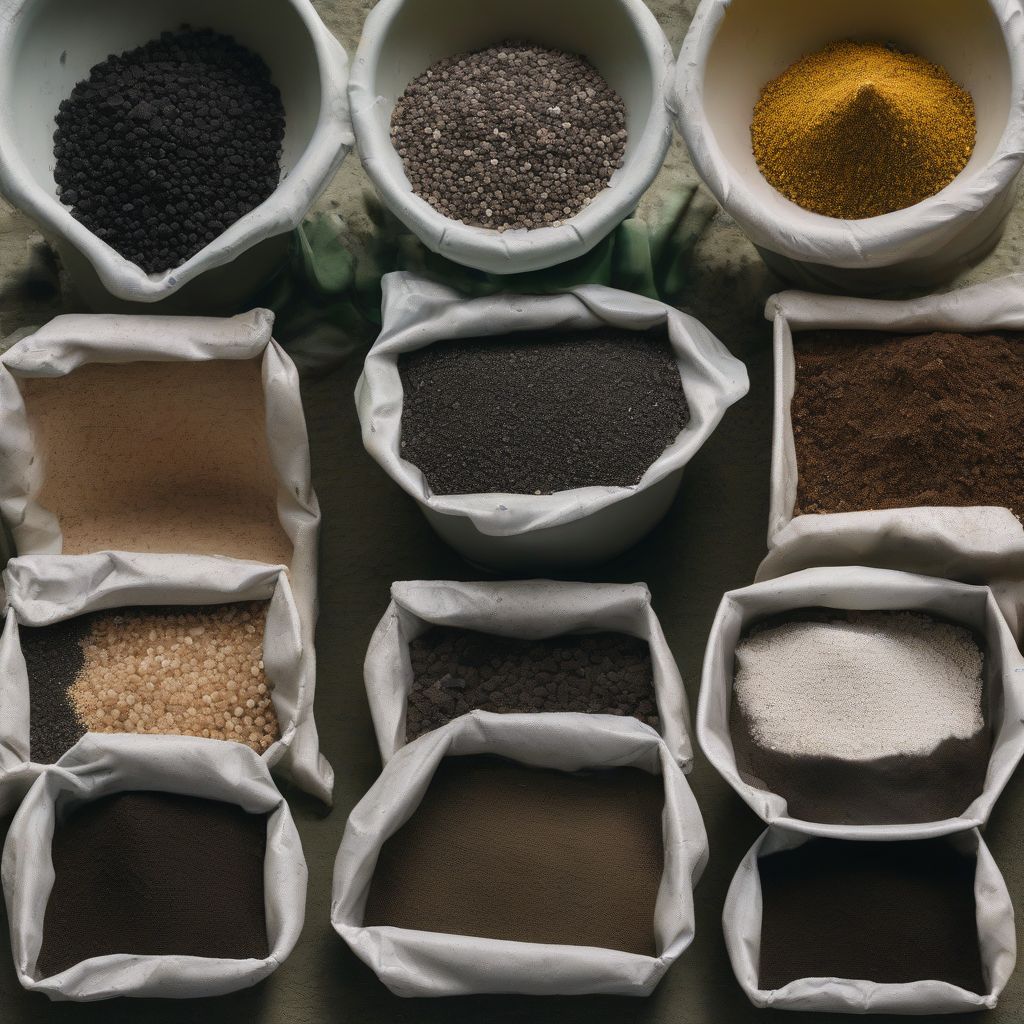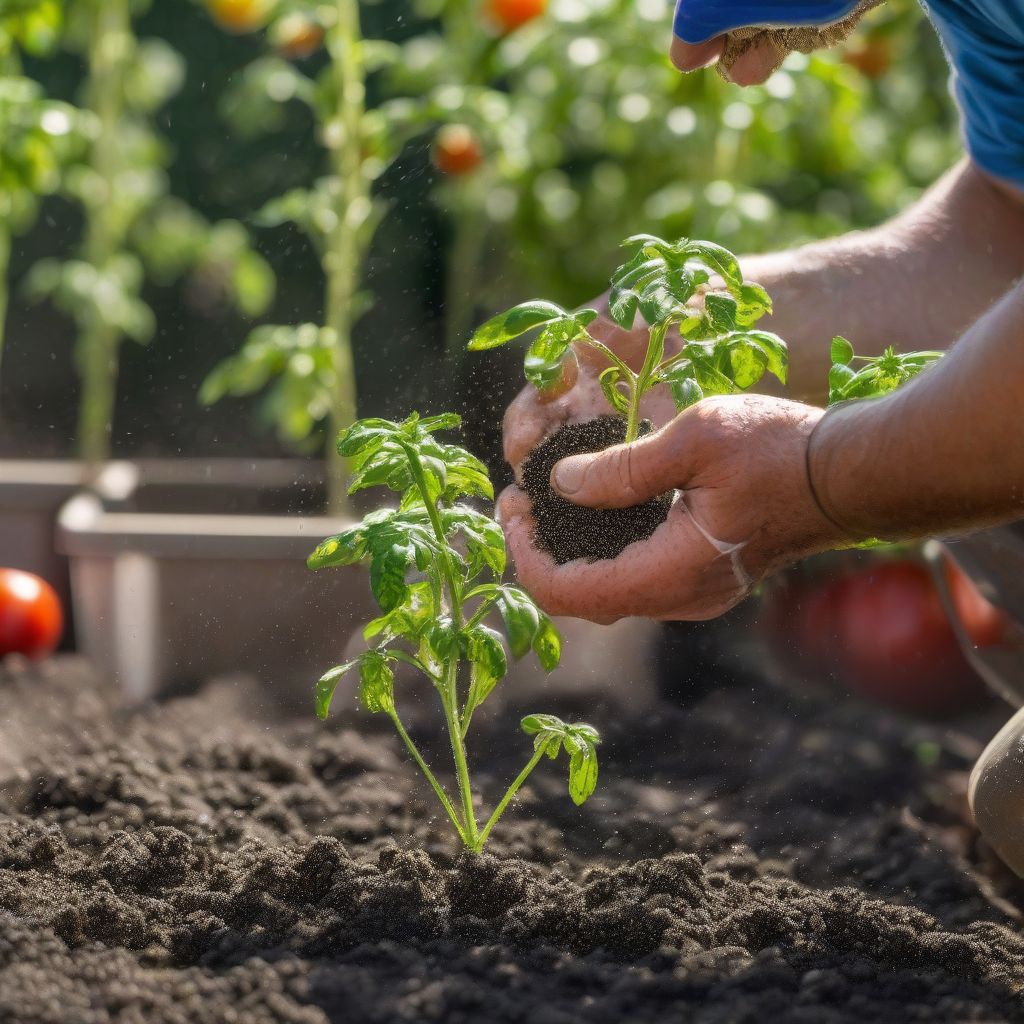Have you ever dreamt of a garden bursting with vibrant blooms and overflowing with delicious, homegrown vegetables? Achieving that lush paradise involves a lot of love, a bit of know-how, and crucially, understanding how to fertilize your garden properly. Just like we need a balanced diet to thrive, our plants crave a well-balanced nutrient mix for optimal growth. Let’s dive into the world of plant nutrition and unlock the secrets to a happy, productive garden.
Understanding the Basics of Plant Nutrition
Before we discuss the “how-to,” it’s helpful to grasp the “why.” Plants, just like all living organisms, require essential nutrients to perform vital functions like growing roots, developing foliage, producing flowers, and ultimately yielding those tasty fruits and vegetables we love.
The Big Three: N-P-K
When you pick up a bag of fertilizer, you’ll notice three prominent numbers, like 10-10-10 or 20-5-10. This trio represents the percentage by weight of the three primary nutrients:
- Nitrogen (N): The muscle builder! Nitrogen promotes leafy green growth and is essential for chlorophyll production, which gives plants their green color.
- Phosphorus (P): The root booster! Phosphorus encourages strong root development, blooming, and fruit and seed production.
- Potassium (K): The protector! Potassium enhances a plant’s overall health, improves disease resistance, and aids in fruit development and flavor.
Beyond the Trio: Secondary Nutrients and Micronutrients
While N-P-K are the stars of the show, don’t underestimate the supporting cast:
- Secondary nutrients: Calcium, magnesium, and sulfur are essential for plant processes and overall health.
- Micronutrients: Iron, manganese, zinc, copper, boron, molybdenum, and chlorine, though needed in smaller amounts, are still crucial for healthy growth.
 Types of Fertilizer
Types of Fertilizer
Choosing the Right Fertilizer for Your Garden
With countless fertilizer options lining store shelves, selecting the right one can feel overwhelming. Here’s a breakdown to simplify the process:
Fertilizer Types:
- Granular Fertilizers: Popular and easy to apply, granular fertilizers release nutrients gradually, making them ideal for long-term feeding.
- Liquid Fertilizers: Offering fast absorption, these are excellent for quick nutrient boosts and are often used for container gardens.
- Slow-Release Fertilizers: These convenient options release nutrients gradually over weeks or even months, reducing the frequency of application.
- Organic vs. Synthetic Fertilizers: Organic fertilizers, derived from natural sources like compost or manure, improve soil structure over time. Synthetic fertilizers, created chemically, deliver nutrients more rapidly.
Knowing Your Soil:
The key to successful fertilization lies in understanding your soil type. A simple soil test can reveal its pH level and nutrient content, guiding your fertilizer choices. You can find soil testing kits at most garden centers or through your local agricultural extension office.
How to Fertilize Your Garden: A Step-by-Step Guide
Now that we’ve covered the fundamentals, let’s delve into the practical steps of fertilizing your garden:
1. Timing is Everything:
Different plants have different feeding schedules. Generally, fertilize:
- Before Planting: Incorporate a balanced granular fertilizer into the soil to provide a nutrient-rich foundation.
- During the Growing Season: For most vegetables and flowering plants, regular fertilization, every 4-6 weeks, is beneficial.
- Container Gardens: Due to frequent watering, container plants often require more frequent fertilization, typically every 2-4 weeks.
2. Read the Label, Always!:
The fertilizer label is your roadmap. It outlines the N-P-K ratio, application rates, and any specific instructions for that particular product. Over-fertilizing can be detrimental to your plants and the environment, so always stick to the recommended guidelines.
3. Application Methods:
- Broadcasting: Evenly sprinkle granular fertilizer over the soil surface, ensuring it doesn’t touch plant stems or leaves.
- Side-Dressing: For established plants, dig shallow trenches a few inches away from the base and sprinkle fertilizer into the trenches.
- Foliar Feeding: Applying diluted liquid fertilizer directly to the leaves allows for rapid nutrient absorption.
 Applying Fertilizer
Applying Fertilizer
Common Gardening Mistakes and How to Avoid Them
Even seasoned gardeners make mistakes. Here are a few common pitfalls to avoid:
- Over-fertilizing: More is not always better! Over-fertilizing can lead to nutrient imbalances, burned roots, and environmental pollution.
- Ignoring Soil pH: The acidity or alkalinity of your soil (its pH) significantly impacts nutrient availability to plants. Soil testing is crucial for proper pH adjustments.
- Forgetting to Water: After fertilizing, water your garden thoroughly to help the nutrients dissolve and reach the roots.
Additional Tips for a Thriving Garden
- Mulch Matters: Applying a layer of organic mulch, like shredded bark or compost, helps retain soil moisture, suppress weeds, and gradually release nutrients as it decomposes.
- Compost: Your Garden’s Best Friend: Adding compost to your garden beds is like giving your plants a multivitamin. It enriches the soil with a wide range of nutrients and improves soil structure.
- Observe Your Plants: Your plants are excellent communicators! Pay attention to their growth habits and leaf color. Yellowing leaves, stunted growth, or other signs of distress can indicate nutrient deficiencies.
[amazon bestseller=”garden-fertilizer”]
Nurturing Your Garden to Abundance
Fertilizing your garden doesn’t have to be a complicated chore. By understanding the fundamentals of plant nutrition, choosing the right fertilizers, and following these simple guidelines, you’ll be well on your way to a thriving and productive garden that brings joy throughout the growing season. Remember, a healthy garden starts with healthy soil, so nurture it well, and reap the delicious rewards!
For more tips on maintaining a flourishing garden year-round, check out our article on How to Maintain a Healthy Garden Year-Round. If you’re interested in the crucial role of soil pH, explore our guide on The Importance of Soil pH in Planting Success. And for container gardening enthusiasts, we have dedicated articles on Tips for Watering and Maintaining Container Gardens and How to Transplant Seedlings: A Beginner’s Guide. Finally, discover the numerous advantages of container gardening in our article The Benefits of Container Gardening for Beginners. Happy gardening!
